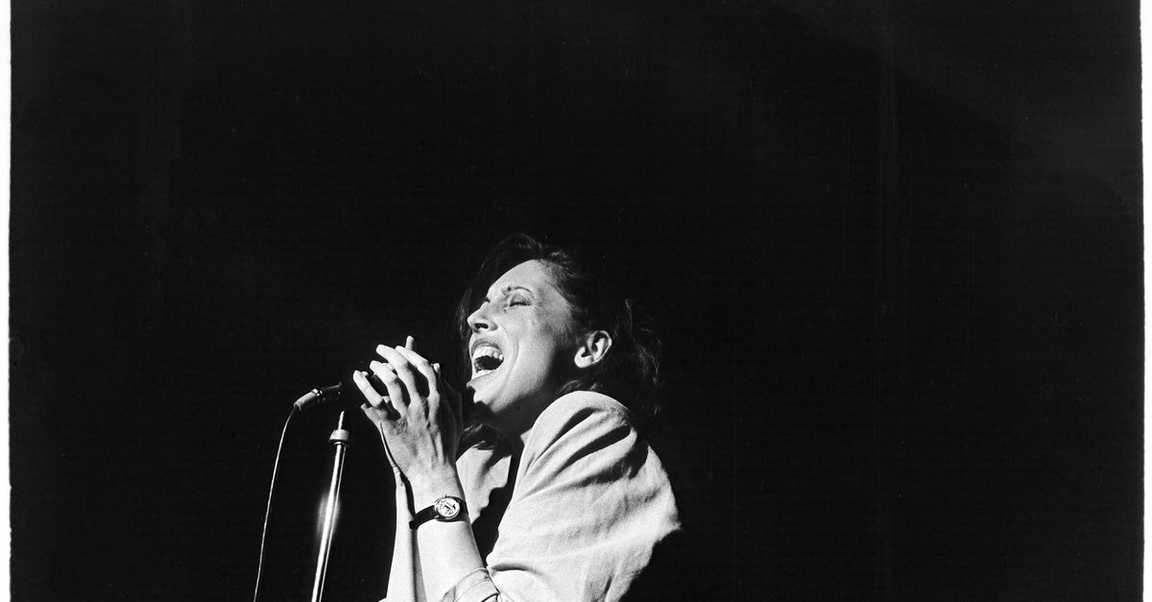
Opening Up the Archive of Moniek Toebosch
A new multi-year project shining a light on the experimental pioneer
In collaboration with Rozenstraat – a rose is a rose is a rose and Stedelijk Museum Breda, this multi-year (2025–2027) project reactivates for new audiences the pioneering artist's experimental legacy through research, exhibitions, and performances.
LI-MA is embarking on this archival project dedicated to the groundbreaking Dutch performance and multimedia artist Moniek Toebosch. Her extensive archive arrives at LI-MA in November 2025, marking the beginning of preparations for an in-depth process of research, preservation, and activation.
Developed in collaboration with Rozenstraat – a rose is a rose is a rose and Stedelijk Museum Breda, and supported by Podiumkunst.net, this initiative aims to explore, expose and reinterpret Toebosch’s multifaceted body of work. By connecting individual projects, performances, and media experiments, LI-MA seeks to illuminate the larger web of collaborations, influences, and artistic dialogues that shaped her practice.
Throughout 2026, researchers, artists, and curators will engage with the archive – uncovering new insights that will inform a series of exhibitions and artistic re-interpretations in 2027. The project highlights Toebosch’s radical approach to performance, media, and materiality, and invites audiences to encounter her work as a living, evolving legacy.

Moniek Toebosch 1.0, 2013. Tribute to Dutch artist Moniek Toebosch (1948–2012). Credit: minddesign.info
About Moniek Toebosch
Moniek Toebosch (1948–2012) was a Dutch artist whose work spanned performance, sound, theatre, film, text, visual arts, and public installations. She moved across disciplines with curiosity and experimentation, often incorporating technology, and was actively involved in mentoring, teaching, and supporting emerging artists. After studying at St. Joost Academy in Breda and working with experimental filmmaker Frans Zwartjes, she developed a distinctive approach marked by theatricality and improvisation.
Moniek Toebosch's career in visual arts only began later. Many of her artworks also consisted of sound, lectures, and performances, in which she created an alienated, timeless atmosphere. In 1981, she reached a wide audience with the installation performance Painthouse, a "composition of wood, linen, paint, and mezzo-soprano," initially presented from the Carré Theatre and televised by the VPRO, then shown at the Stedelijk Museum in Amsterdam.
Her early collaborations with Michel Waisvisz, which started in the 1970s, produced experimental music-theatre performances that pushed creative boundaries. In 1983, Toebosch presented four live broadcasts for VPRO during the Holland Festival under the title Aanvallen van Uitersten (Attacks of Extremes), showcasing festival segments to the public. During one broadcast, mounting tensions caused the conductor to halt the performance and attempt to leave with his orchestra. Toebosch refused to let the moment collapse. She persuaded several musicians to remain, took up the baton herself, and sang Wagner's Liebestod live on television with the dozen who stayed, creating a legendary moment in broadcasting history.
Later works, including the public project Engelenzender (Angel Radio Station, 1994–2000), reflected her focus on context, audience, and site, integrating sound, voice, and environment in considered ways. Toebosch’s installations, such as the series Les Douleurs Contemporaines, and performative video works like Welkom, gaat u zitten, she questioned and reinterpreted conventional exhibition formats and frameworks, a thread that runs through her entire oeuvre.
Her final performance, Erasing & Recovering on a Saturday Afternoon (2011), a reference to the song Lazing on a Sunday Afternoon (1975) by Queen, demonstrates her attention to gesture, space, and temporality, the culmination of a restlessly experimental practice that continues to inform new generations of artists.
Toebosch was a versatile artist whose experimental practice defied easy categorisation. Her eclectic and confrontational body of work challenged art critics and historians alike to find adequate frameworks for understanding it. Beyond her own practice, she mentored students at Dutch art academies, served as director of DASArts (2004–2007), and inspired numerous young artists, shaping a generation of creative voices.
Her contributions earned significant recognition, including the Sandberg Prize in 1997 for Engelenzender and the lifetime achievement award from Fonds BKVB in 2000. Her work was exhibited at major institutions including de Beyerd (Breda), de Appel, the Stedelijk Museum (Amsterdam), Witte de With (Rotterdam), Fundació Joan Miró (Barcelona), and Le Fresnoy (Lille).
Header and thumbnail: Moniek Toebosch (1984). Photo by Leo van der Kleij/Hollandse Hoogte.






